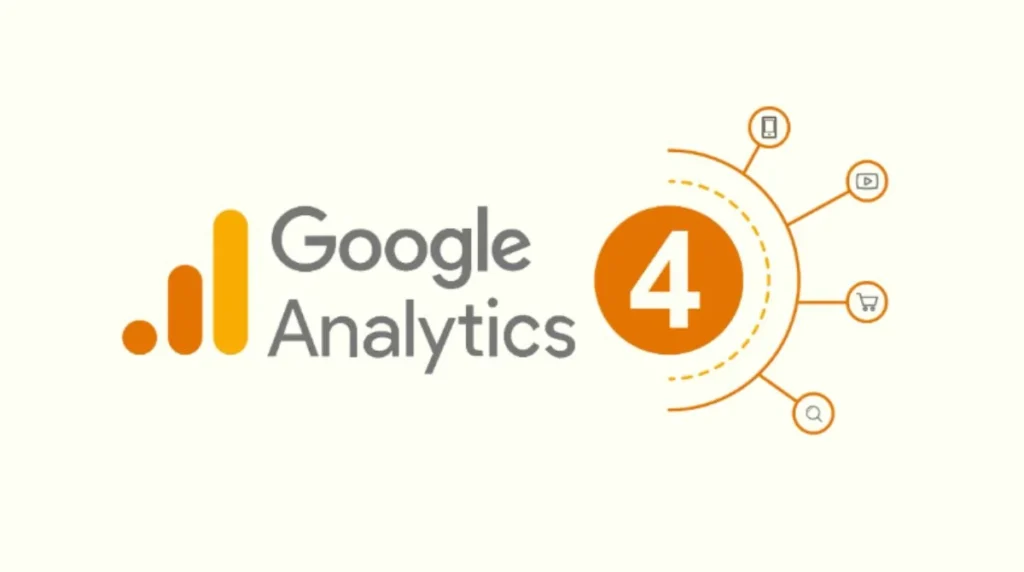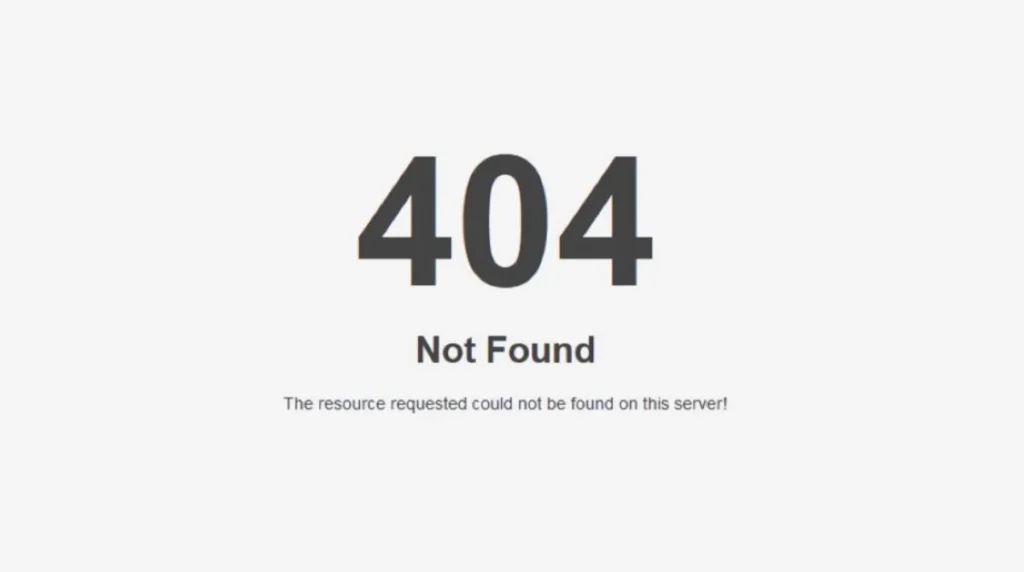What Is the Meta Ads Library?
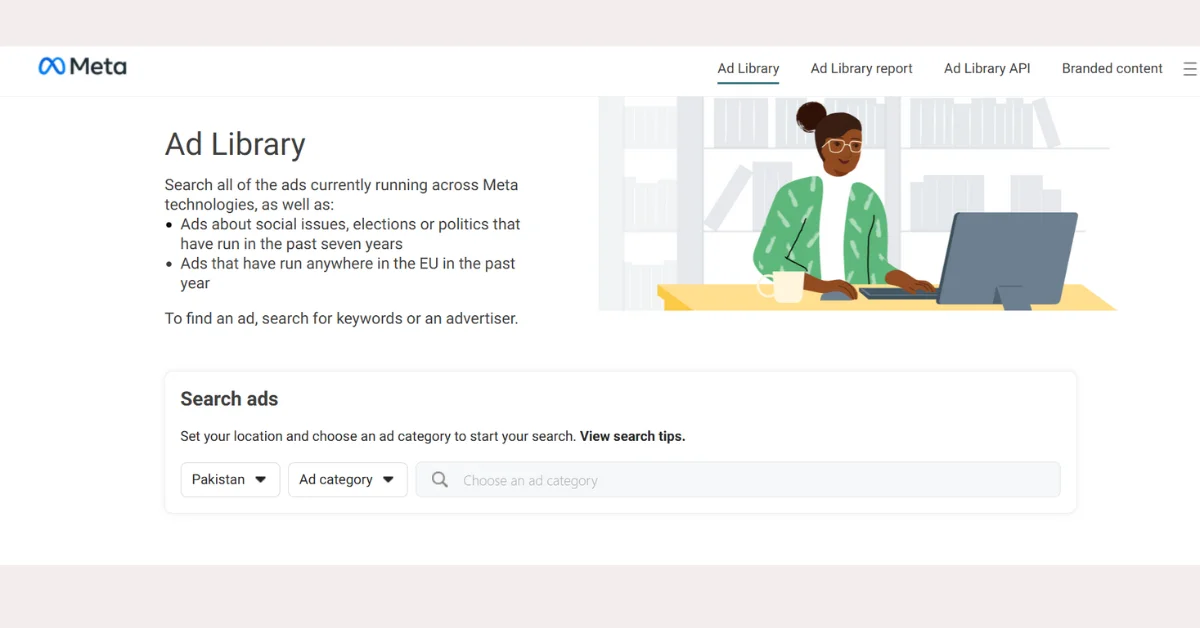
The Meta Ads Library is a free, public tool by Meta where you can see all active (and some inactive) ads running across Facebook, Instagram, Messenger, and the Audience Network. It started as a platform for political transparency in 2019, but now it’s a valuable resource for anyone wanting to study ads.
Why it matters?
- Transparency & insight: You can check what ads are currently showing and how long they’ve been active .
- Creative inspiration: You can find fresh visuals, copy style, and messaging that works in your market.
- Trend spotting: See what formats, tones, and offers are popular in your niche.
- Audience ideas: In some regions, you get glimpses of age, gender, and country targeting .
Getting Started: How to Access the Meta Ads Library
If you’re new to the Meta Ads Library, don’t worry getting started is very simple. It’s a free tool by Meta (Facebook’s parent company) and you don’t even need an account to start browsing ads. Here’s how to use it step by step:
1. Visit the Ads Library Website
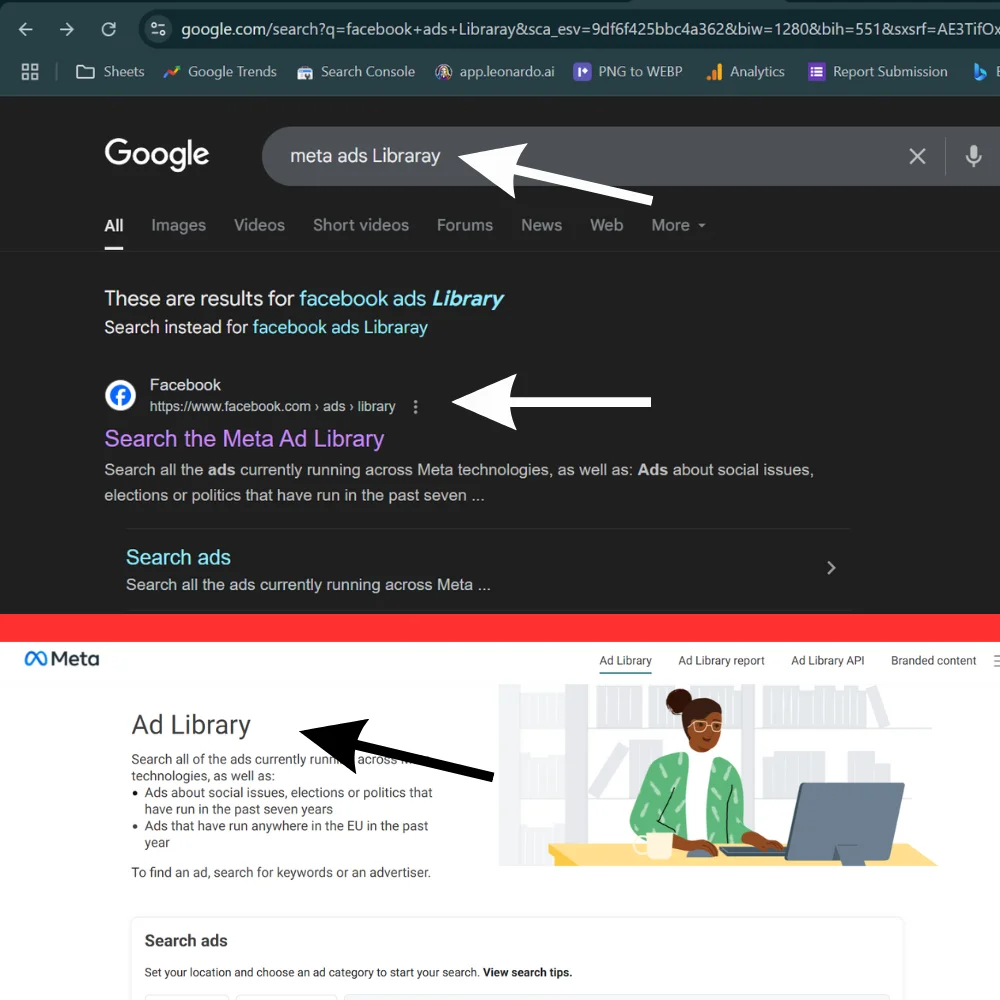
Open any web browser (like Chrome, Firefox, Safari, etc.) and go to this URL:
facebook.com/ads/library
This is the official Meta Ads Library homepage where you can start your search.
2. (Optional) Log In to Facebook
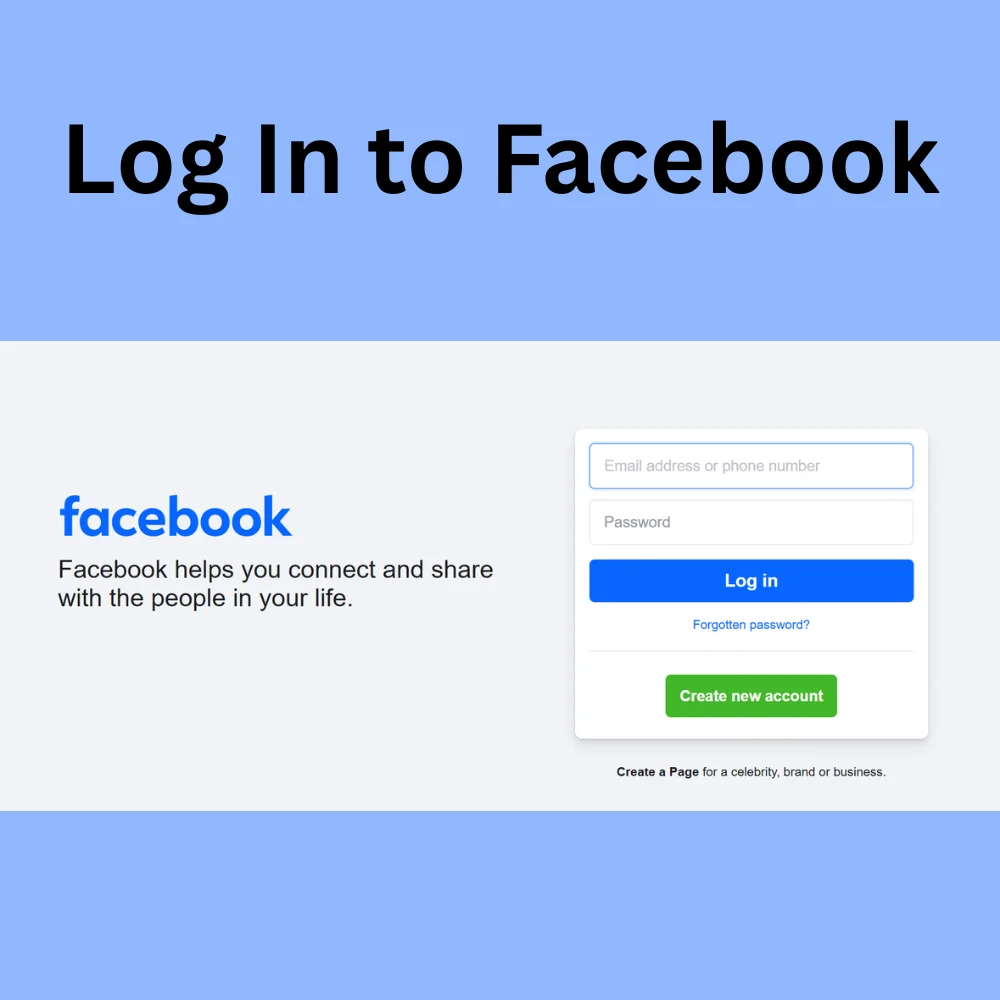
While it’s not required, logging into your Facebook account might help you see more ads especially those targeted to adults (18+), or region-specific ones. It also makes your browsing experience smoother if you’re searching often.
3. Pick Your Filters

Before you search for ads, you can set filters to narrow down your results and focus only on the ads you want to see.
Here are two important filters to set:
- Country: Select the country or region you’re interested in. For example, if you want to see what ads a competitor is running in the USA, choose United States.
- Ad Category: You’ll see categories like:
- All Ads (default, shows everything)
- Politics
- Housing
- Jobs
- Credit
These categories exist because ads in certain industries follow special advertising rules. If you’re not in one of these industries, just stick to All Ads.
4. Search for Ads
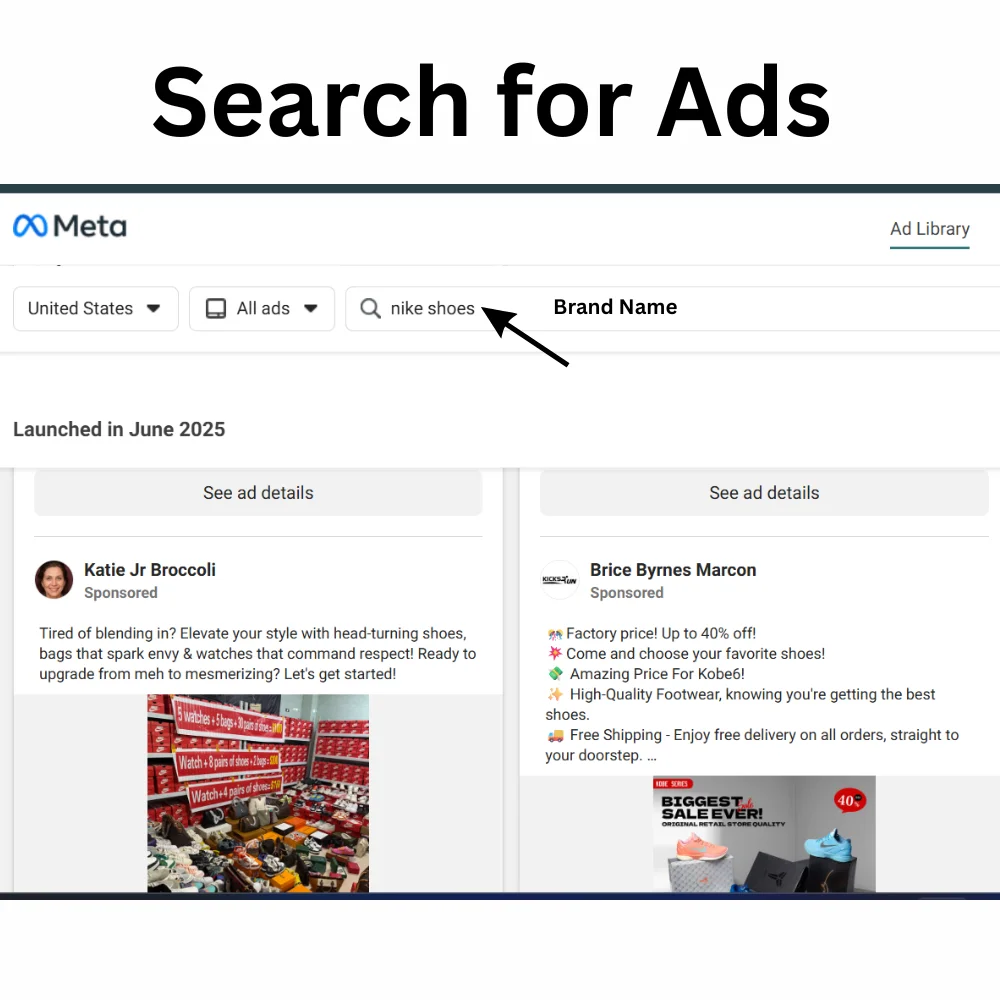
Now that your filters are set, type into the search bar at the top.
You can search by:
- A brand or business name (e.g., “Nike” or “Adidas”)
- A keyword related to a product or service (e.g., “running shoes”, “organic skincare”, or “online courses”)
Once you enter your search, click the magnifying glass icon or press Enter.
5. Explore the Results
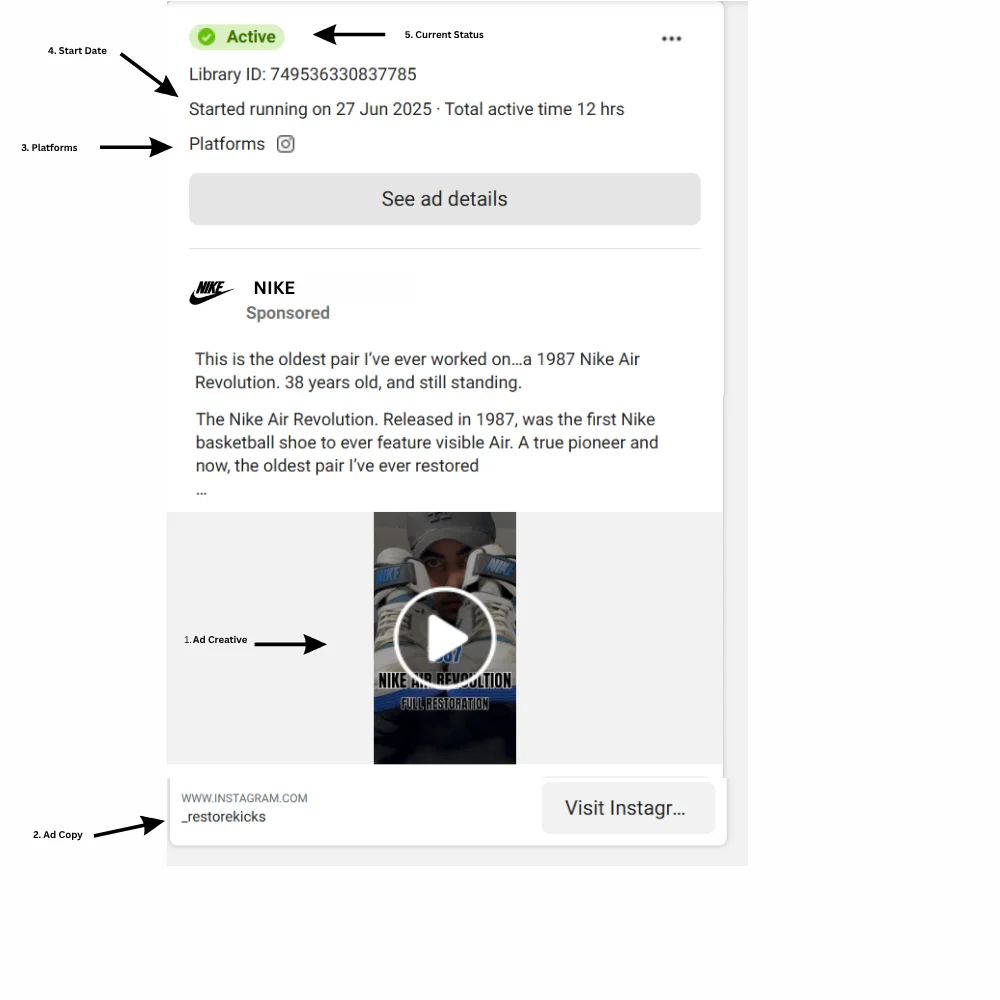
Now, you’ll see a list of all ads that match your search.
For each ad, you can view:
- Ad Creative: The image, video, or carousel the advertiser is using
- Ad Copy: The text, headline, and call-to-action buttons
- Platforms: Whether the ad is showing on Facebook, Instagram, Messenger, or the Audience Network
- Start Date: When the ad started running
- 5. Current Status: Whether the ad is still running or has stopped
Some ads may also include link previews, showing you where the ad is sending people (the landing page or website).
Step-by-Step: Competitor Analysis Tips
Follow these steps to turn the Ads Library into a research goldmine:
1. Search and filter smartly
- Use exact terms or brand names to find specific ads.
- Narrow results by keyword, language, platform, or date range.
- For broad inspiration, use general keywords like “eco‑friendly bags” .
2. Record ad formats & creativity
- Take notice if they prefer videos, single images, or carousel ads.
- Keep track of visuals, headlines, copy tone, and calls‑to‑action.
3. Spot long‑running ads
- Ads running for weeks or months usually signal strong performance.
- They often reveal popular products or offers worth considering in your strategy.
4. Learn from targeting
- In EU, Ads Library shows age, gender, and country targeting.
- Guess at audiences: young parents, fitness buffs, urban millennials.
5. Note ad spend & frequency
- Political or sensitive-category ads can show spending estimates and impressions.
- Look at update rate and variety to assess how heavily competitors are investing.
6. Create a swipe file
- Save inspiring or successful ads in a folder, document, or tool (e.g., Trello, Pinterest) .
- You’ll use this later for brainstorming or reference.
7. Compare with your performance
- Compare the style, frequency, and spend level with your own ads.
- Learn why competitors may be doing better and where you can improve.
Advanced Tips & Best Practices
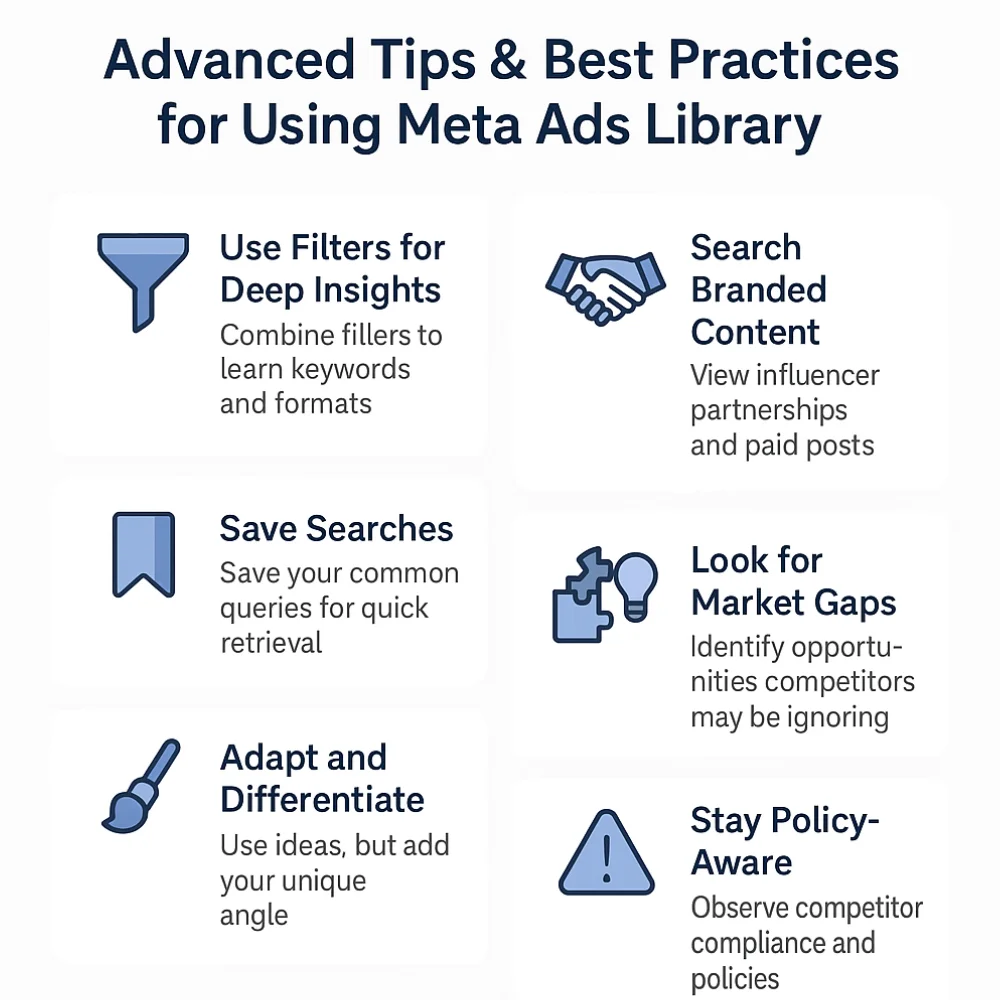
- Use filters for deep insights: Learn keywords and formats by combining filters like “video” + “English” + specific advertiser.
- Search branded content: View influencer partnerships and paid posts on Facebook/Instagram using the “Branded content” filter.
- Save searches: Save your common query setups (e.g., “Nike carousel ads”) and quickly revisit them .
- Look for market gaps: If competitors stick to images, try videos. If they ignore Messenger, consider it. Gaps = opportunities.
- Don’t copy adapt and differentiate: Use ideas, but add your unique angle. Avoid being a boring copycat .
- Stay policy‑aware: Observe competitor compliance don’t mimic misleading claims or restricted categories.
Using Insights in Your Campaigns
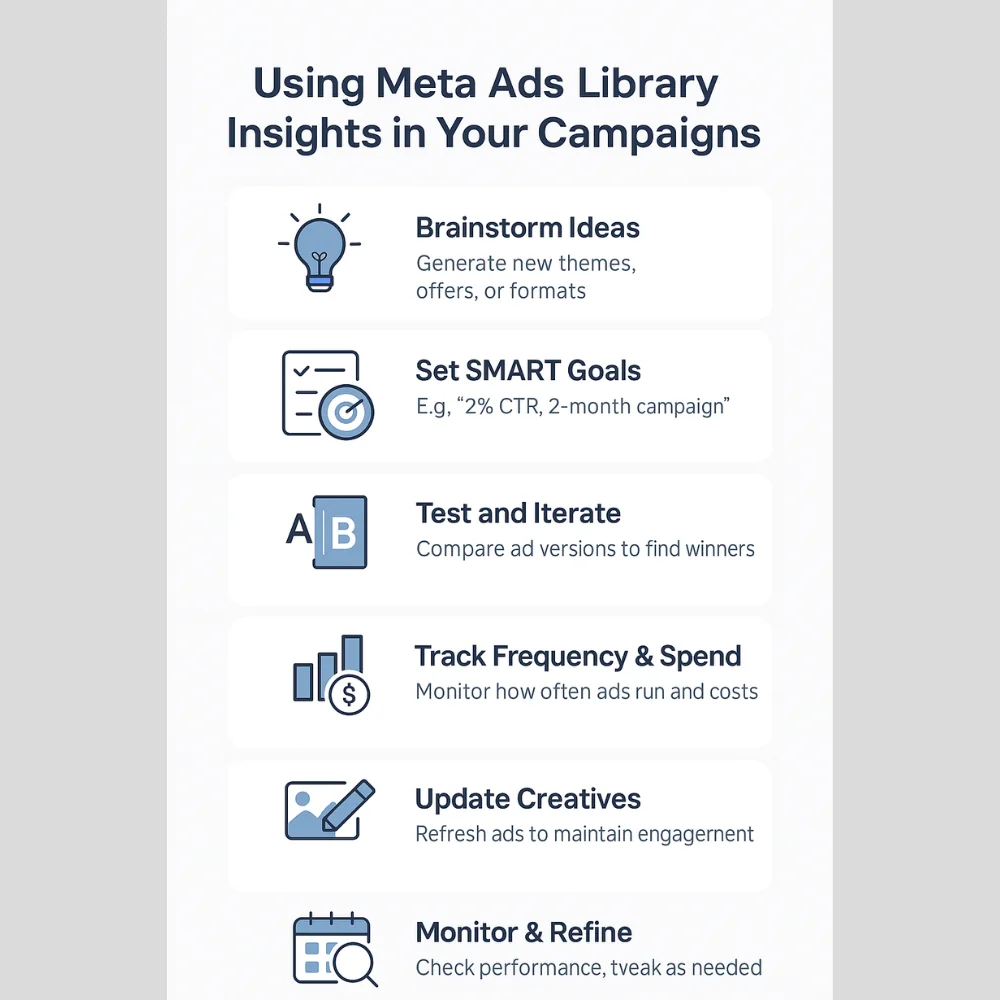
After collecting data, follow these steps:
- Brainstorm ideas: Use your swipe file to spark themes, offers, copy angles, or formats you haven’t tried.
- Set SMART goals: E.g., “Run a video ad targeting women aged 25–34 that lasts two months and achieves a 2% CTR.”
- Test and iterate: Launch A/B tests comparing your ads with competitor-inspired versions; keep the winners.
- Track frequency & spend: Monitor your frequency. If competitors are paying more for longer-running ads, consider a budget bump.
- Update your creatives: Rotate ads like competitors. If they’re updating monthly, so should you.
- Monitor and refine: Schedule weekly or bi‑weekly check-ins. Save anything new and tweak your ads based on fresh trends.
Limitations & Things to Keep in Mind
- Incomplete data: Not all targeting, spend, or impressions are visible just what Meta allows.
- Regional gaps: Some filters or demographics are only in EU, so results vary by country.
- No performance metrics: You don’t see clicks or conversion rates only duration, format, and snapshots.
- Avoid stealing: Use insights to spark ideas, but never copy visuals or claims exactly risk account bans or discredit.
Final Thoughts
The Meta Ads Library is like having binoculars into your competitors’ ad world. It gives real-time access to their creative styles, pacing, and messaging. By using it smartly searching well, filtering carefully, saving your favorites you can build stronger, more informed campaigns, stay ahead of trends, and make your ads more attention-grabbing. Just remember: learn, but don’t copy.
Related Topic: What is CPM in Advertising? Cost Per Impression Calculator


